NCERT Solutions Class 9 Science Chapter 8 - Force and Laws of Motion
NCERT Solutions for Class 9 Science Chapter 8 – Force and Laws of Motion are essential for understanding key Physics concepts in the CBSE curriculum. These well-structured answers help students grasp topics like Newton’s laws of motion, inertia, mass, momentum, and their applications. Designed as per the latest syllabus, these solutions strengthen conceptual clarity and improve exam preparation. Ideal for revision and practice, they encourage logical thinking and scientific understanding, making them a valuable study tool for scoring well in Class 9 Science exams.
NCERT Solutions Class 9 Science – Force and Laws of motion – Exercise Images
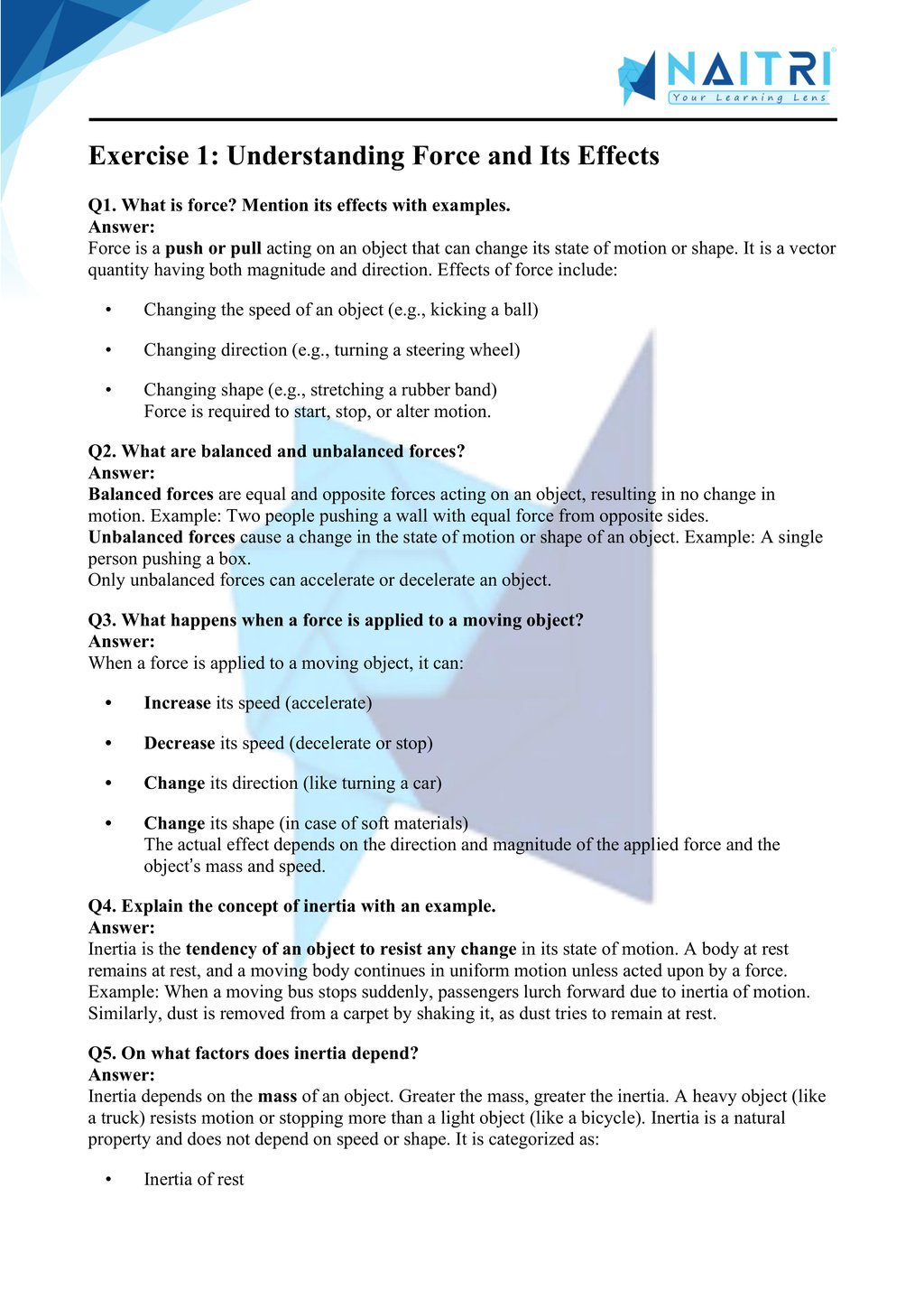
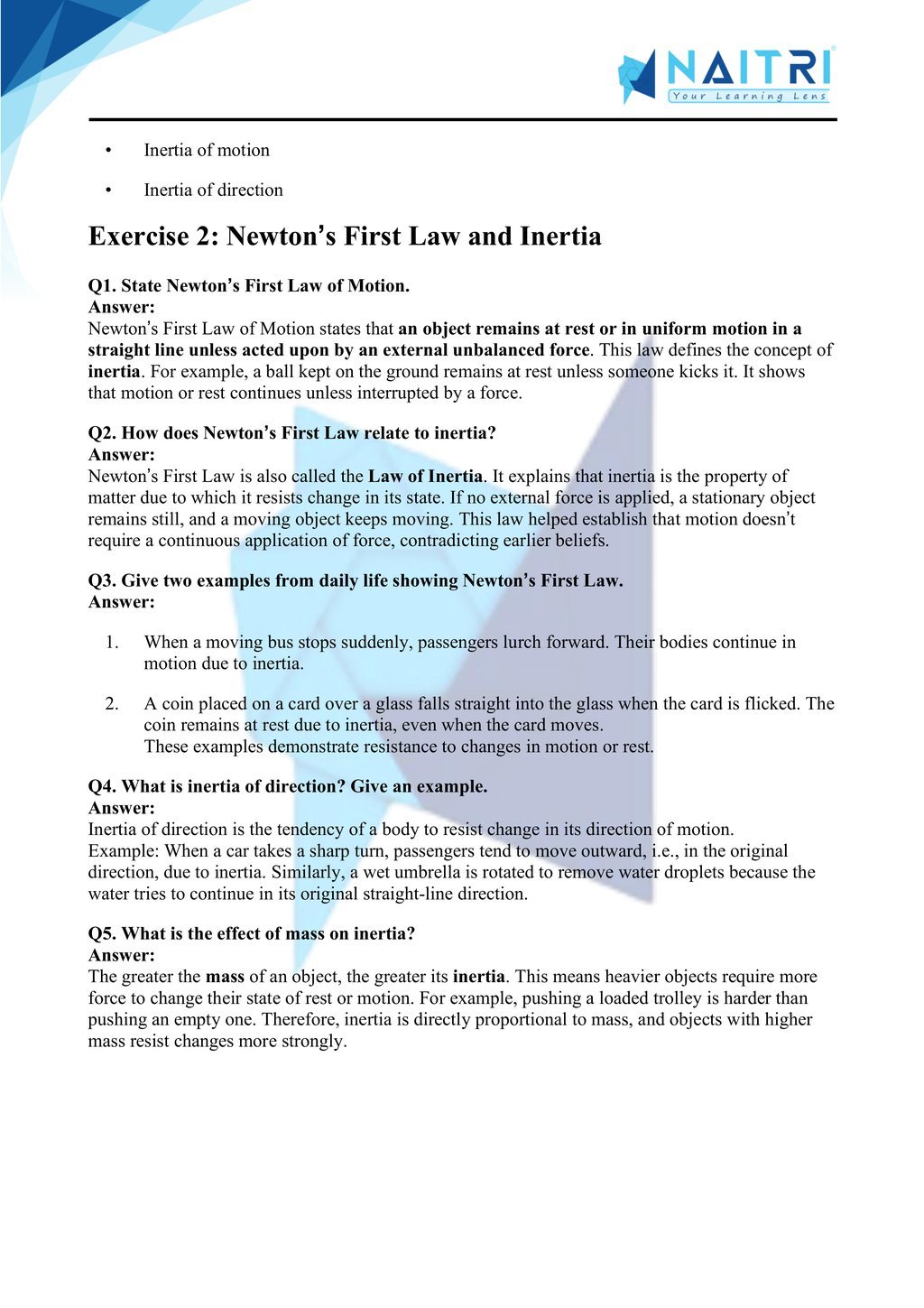
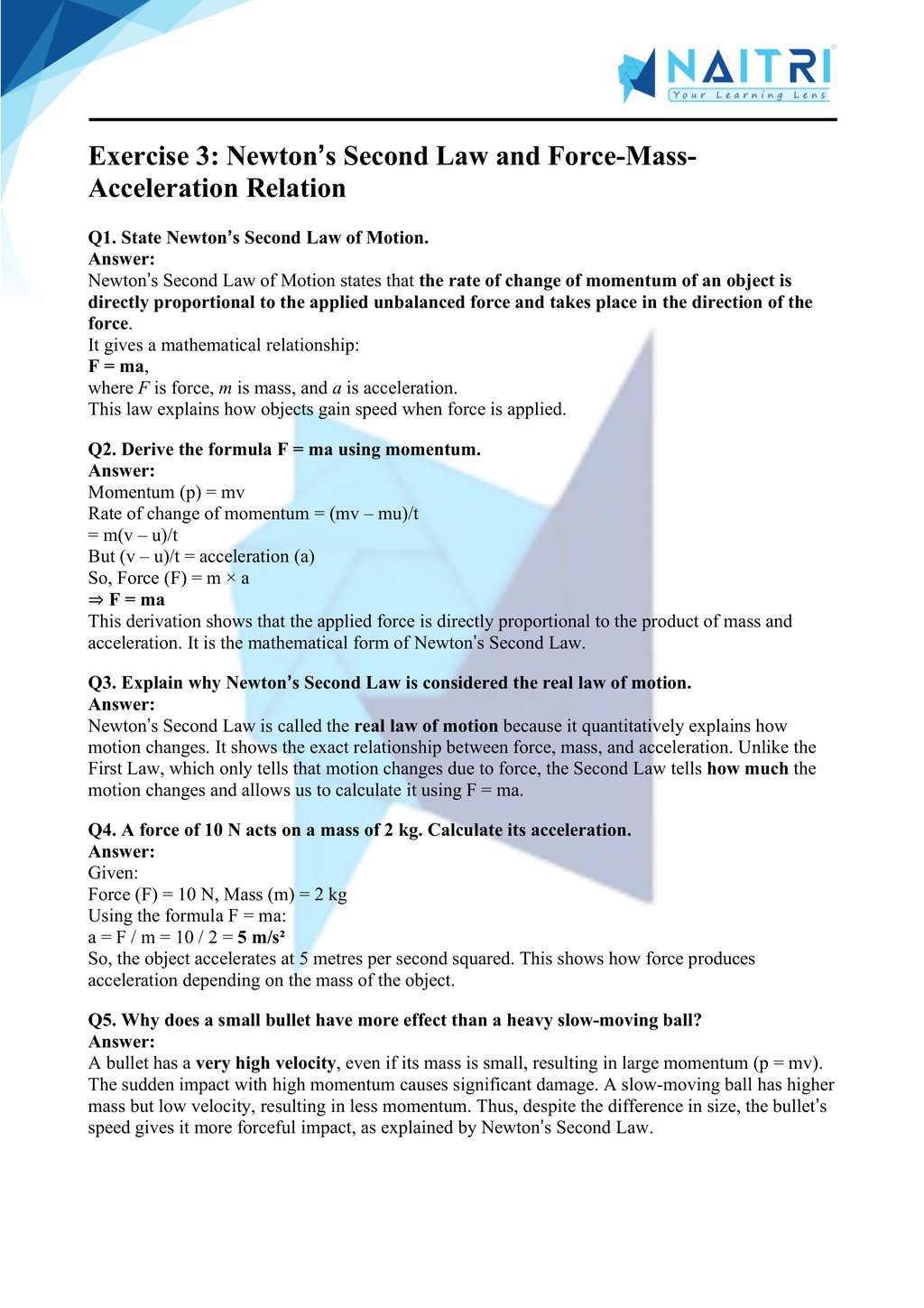
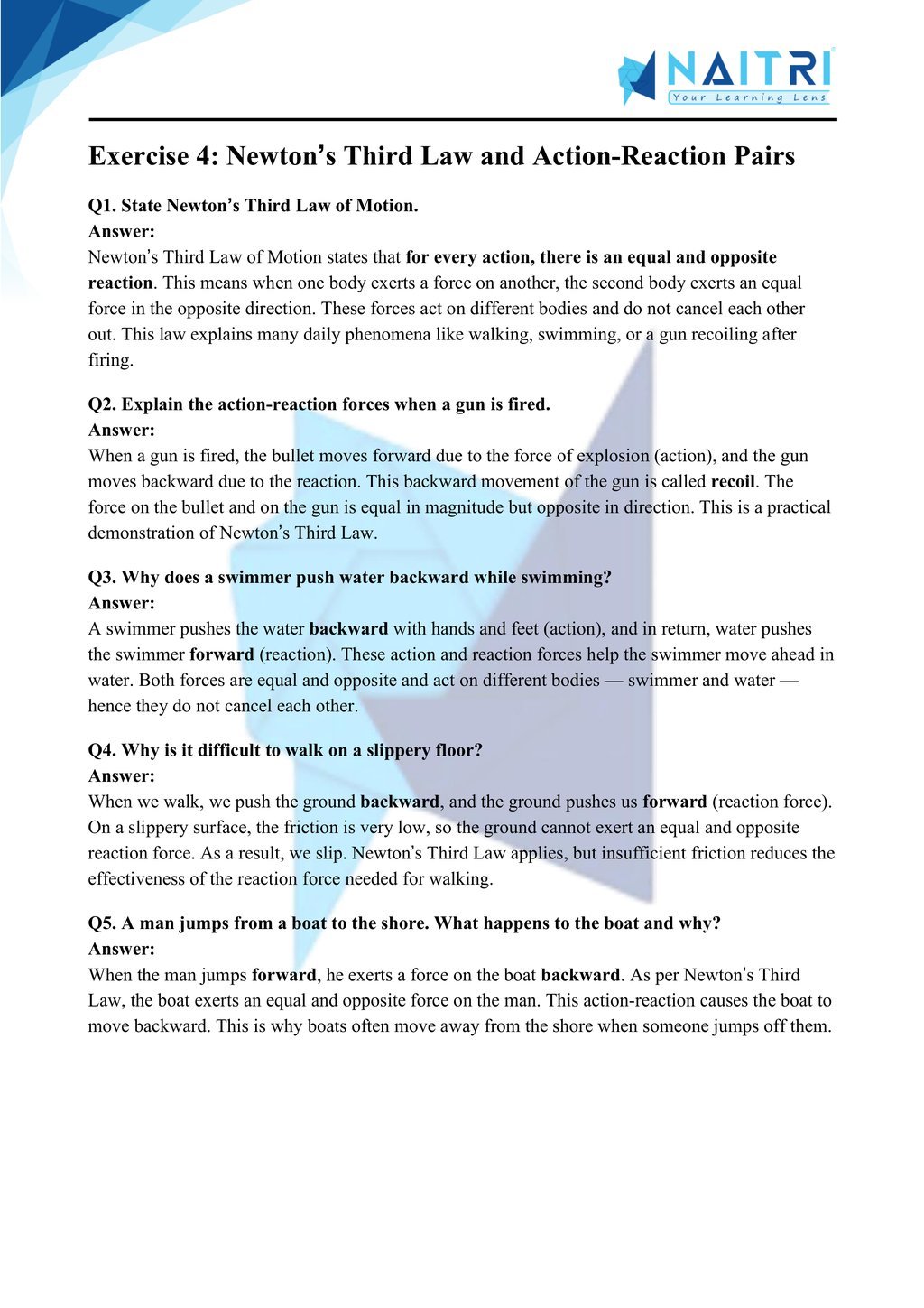
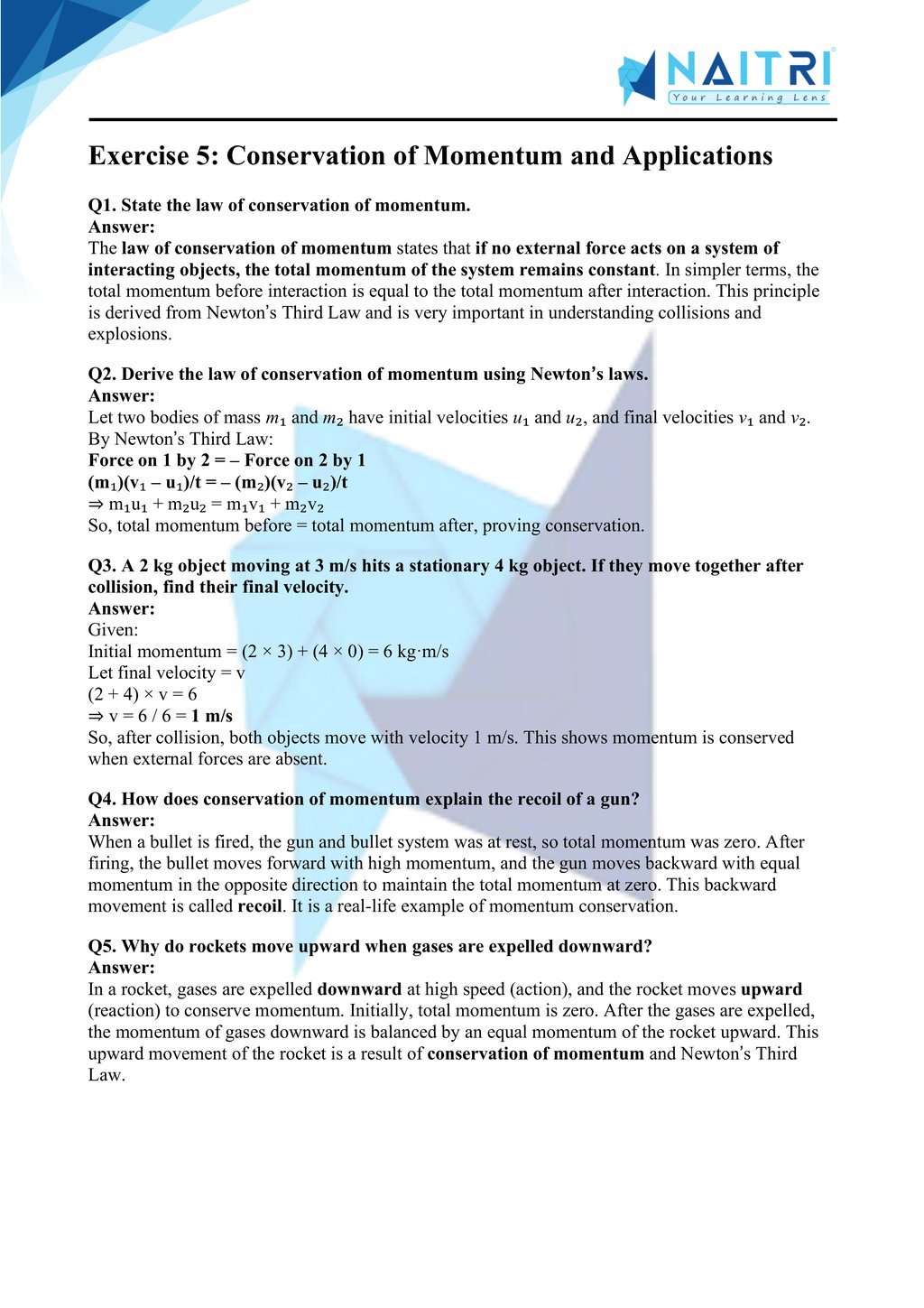
Experience Science Like Never Before – With AR!
Understanding Force and Laws of Motion is now more exciting and immersive! With the NAITRI App, you can explore complex science concepts through Augmented Reality (AR). Experience forces act, collisions occur, and Newton’s laws in action — right in front of you. Our AR-powered lessons make learning interactive, 3D, and fun, helping you retain concepts better and enjoy every topic.



Visualize . Interact . Understand . The future of learning is here
Force and Laws of Motion – Important Questions with Answers
1. What is force?
Answer: Force is a push or pull that can change the state of motion or shape of an object.
2. What is the SI unit of force?
Answer: The SI unit of force is the newton (N).
3. Define balanced and unbalanced forces.
Answer:
Balanced forces do not change the state of motion of an object.
Unbalanced forces change the state of motion or cause acceleration.
4. What happens when two equal and opposite forces act on an object?
Answer: The object remains in its state of rest or uniform motion (balanced force).
5. State Newton’s First Law of Motion.
Answer: An object remains at rest or in uniform motion in a straight line unless acted upon by an external unbalanced force.
6. What is inertia?
Answer: Inertia is the tendency of an object to resist any change in its state of motion or rest.
7. On what factor does inertia depend?
Answer: Inertia depends on the mass of the object. Greater the mass, greater the inertia.
8. State Newton’s Second Law of Motion.
Answer: The force acting on an object is equal to the product of its mass and acceleration.
F = ma
9. Define 1 newton of force.
Answer: 1 newton is the force required to accelerate a mass of 1 kg by 1 m/s².
10. A force of 10 N is applied on a mass of 2 kg. Find the acceleration.
Answer:
F = ma → a = F/m = 10 / 2 = 5 m/s²
11. State Newton’s Third Law of Motion.
Answer: For every action, there is an equal and opposite reaction.
12. Why does a gun recoil when fired?
Answer: Due to Newton’s Third Law – the bullet moves forward, and the gun experiences an equal and opposite reaction backward.
13. What is momentum?
Answer: Momentum is the product of mass and velocity of an object.
Momentum (p) = mass × velocity
14. What is the SI unit of momentum?
Answer: The SI unit is kg·m/s.
15. State the law of conservation of momentum.
Answer: The total momentum of a system remains constant if no external force acts on it.
16. A ball of mass 0.5 kg is moving with a velocity of 10 m/s. Find its momentum.
Answer:
p = mv = 0.5 × 10 = 5 kg·m/s
17. Why do passengers fall forward when a moving bus stops suddenly?
Answer: Due to inertia of motion, the body tends to remain in motion while the bus stops.
18. Why do passengers fall backward when a stationary bus suddenly starts?
Answer: Due to inertia of rest, the body tends to remain at rest while the bus moves forward.
19. How does a karate player break a slab of ice with a single blow?
Answer: By applying a large force in a very short time, producing a large momentum change.
20. A 2 kg mass is moving at 4 m/s. A force stops it in 2 seconds. What is the force applied?
Answer:
Initial momentum = 2 × 4 = 8 kg·m/s
Final momentum = 0
Change in momentum = 8
Force = Change in momentum / Time = 8 / 2 = 4 N
21. What does the slope of a momentum-time graph represent?
Answer: Force
22. What causes the motion of a rocket?
Answer: The expulsion of gases downward (action) produces an upward thrust (reaction) – Newton’s Third Law.
23. Name the factor affecting the rate of change of momentum.
Answer: Force and time duration.
24. A body of mass 3 kg accelerates at 2 m/s². Find the force acting on it.
Answer:
F = ma = 3 × 2 = 6 N
25. Why do athletes run a few steps before taking a long jump?
Answer: To gain momentum which helps in jumping further due to greater initial velocity.
In Force and Laws of Motion, students explore how forces initiate, change, or halt the motion of objects and learn the three fundamental laws formulated by Sir Isaac Newton. The chapter introduces the concepts of inertia, momentum, and the conservation of momentum, and shows how these principles govern everyday phenomena—from a rolling ball to vehicle safety features.
Related Chapters You May Like
- Chapter – 1 Matter in Our Surroundings
- Chapter – 2 Is Matter Around Us Pure
- Chapter – 3 Atoms and Molecules
- Chapter – 4 Structure of the Atom
- Chapter – 5 The Fundamental Unit of Life
- Chapter – 6 Tissues
- Chapter – 7 Motion
- Chapter – 9 Gravitation
- Chapter – 10 Work and Energy
- Chapter – 11 Sound
- Chapter – 12 Improvement in Food Resources
Download Naitri App
Easy, Visual Learning — Right on Your Phone
Learn with Augmented Reality! The Naitri app makes CBSE and MP Board concepts interactive and fun — even in low-resource settings. Watch lessons, complete homework, take tests, and track progress — all in one place. Anytime. Anywhere.
Available on








